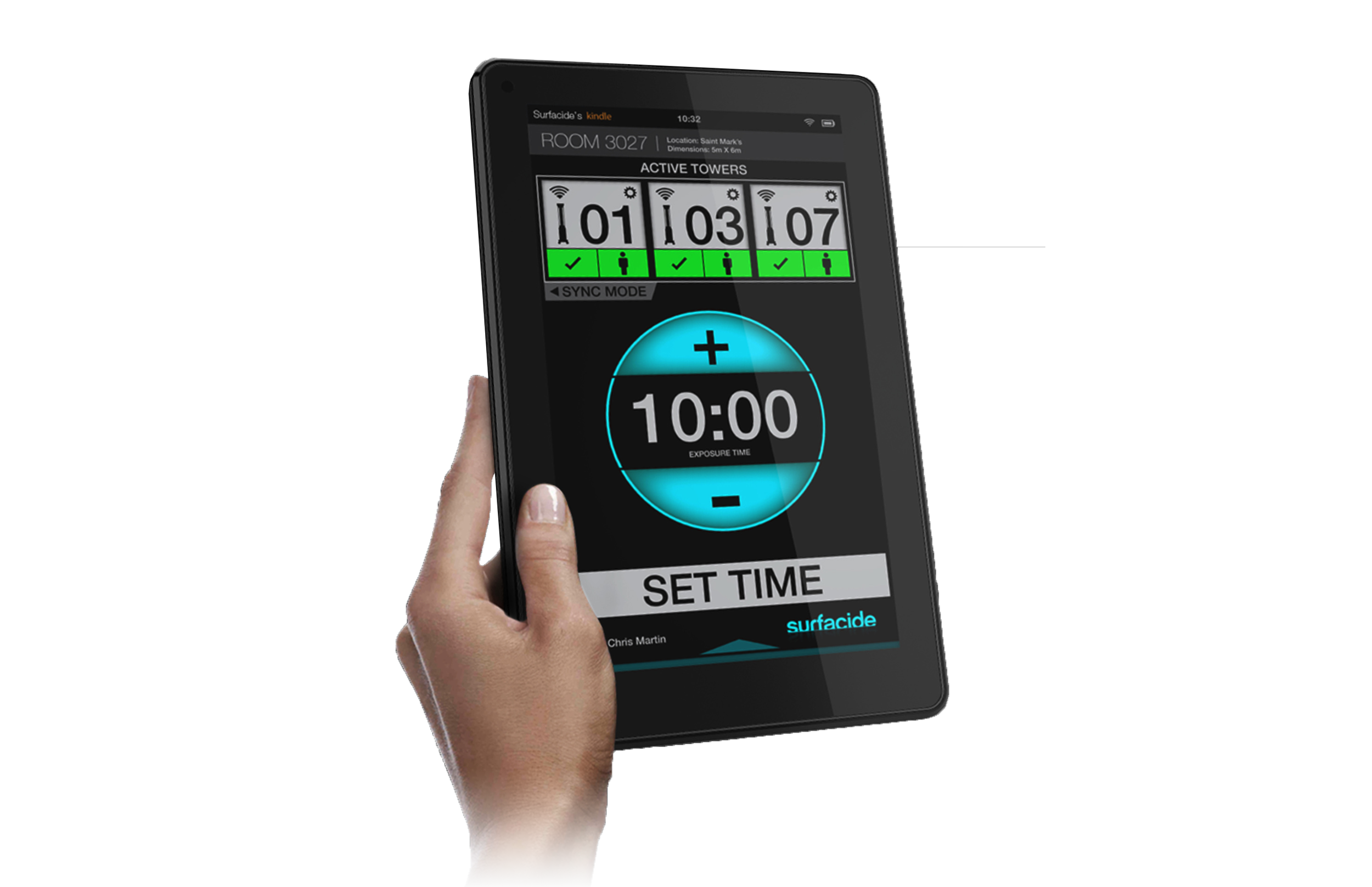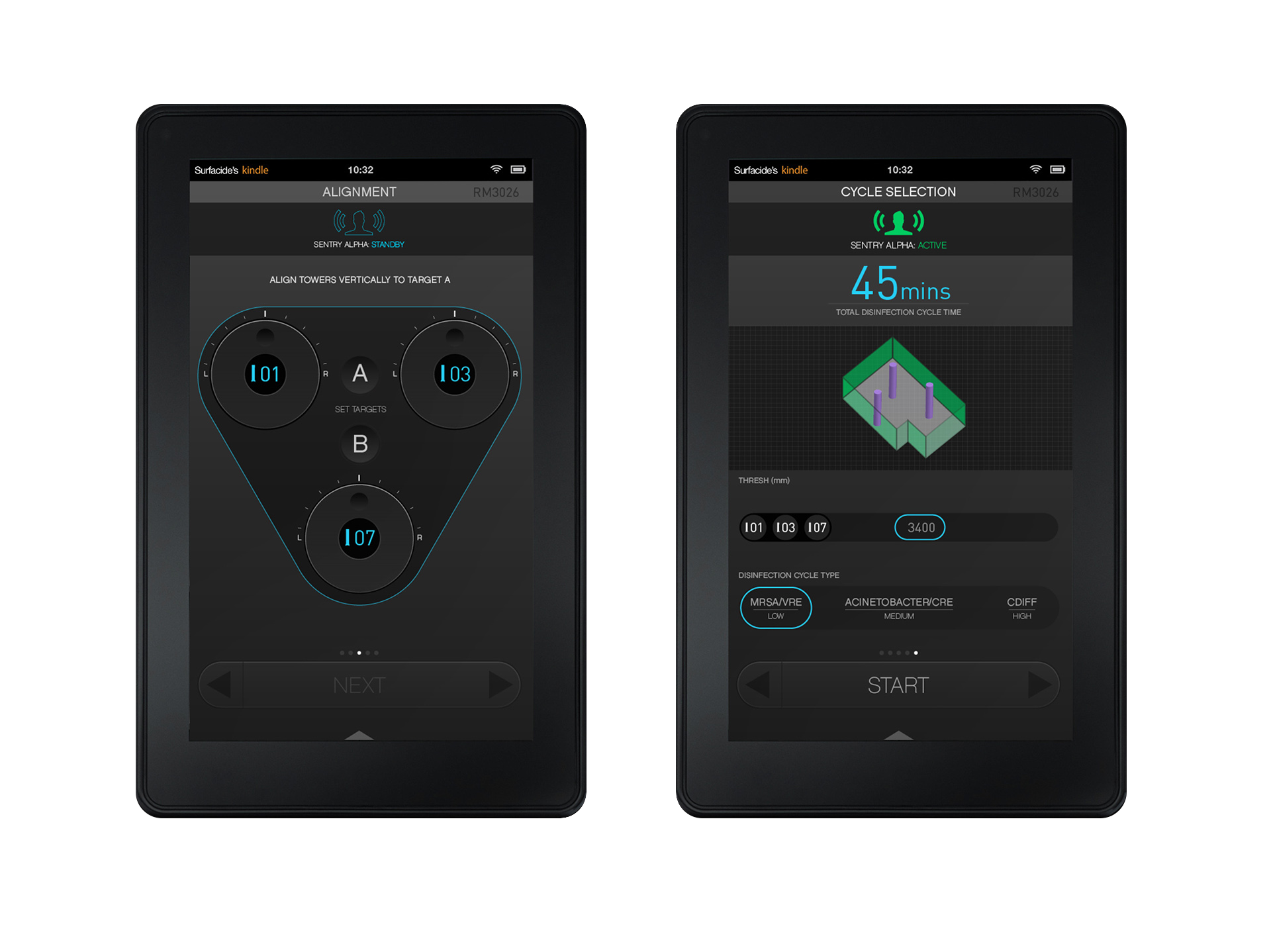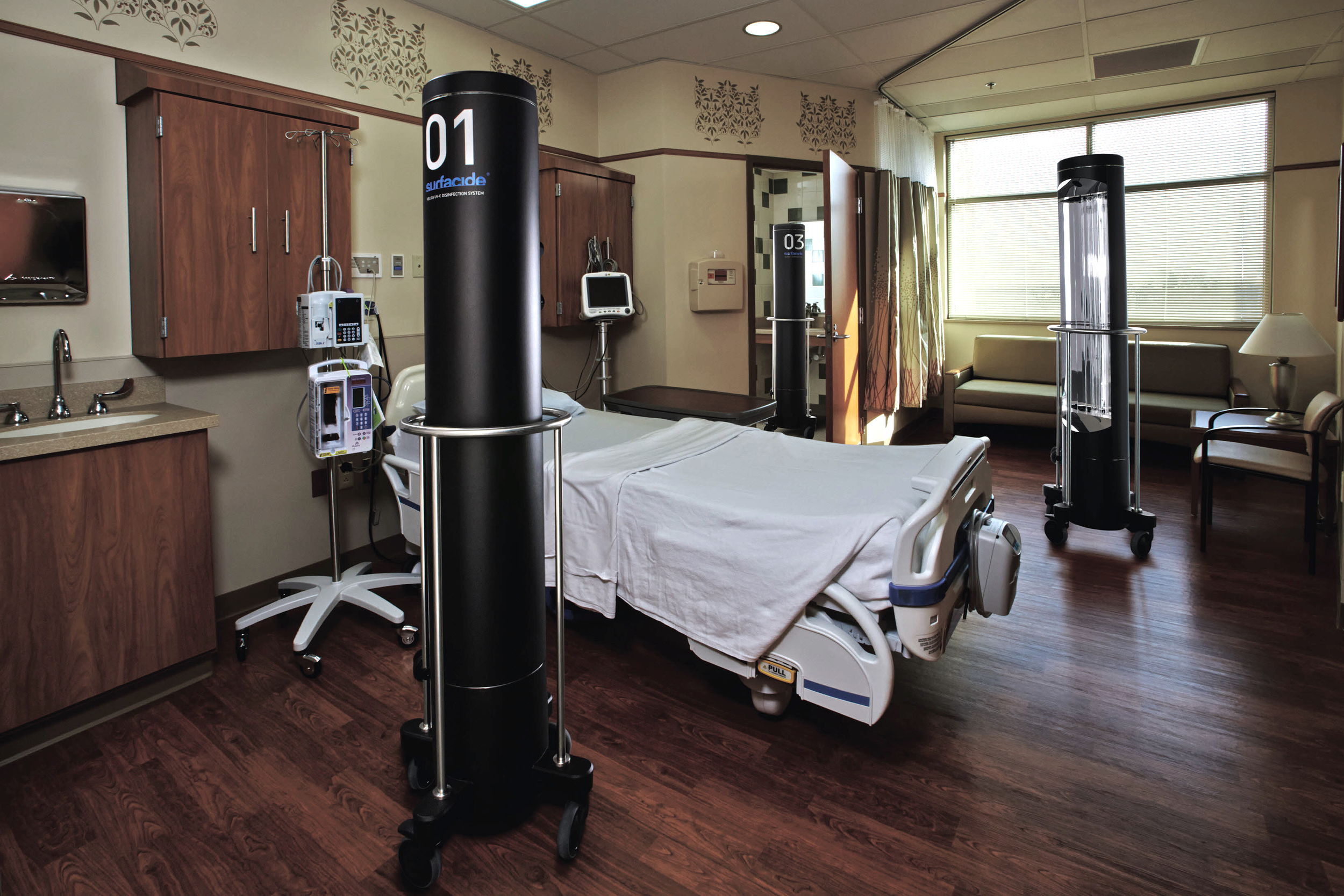PRODUCT DESIGN, mechanical ENGINEERING, UI/UX, Strategy
intro
saving lives with ultra violet light
_
In the United States alone, approximately 2 million people will contract a Hospital Acquired Infection (HAI) and 100,000 people will die each year. That is more than the two leading cancers combined. The economic burden is equally startling; the cost to the US economy is close to $40 billion dollars.
MINIMAL partnered with Gunner Lyslo, CEO & Founder, to develop and commercialize a smart, UV-C light-based system that eradicates “superbugs” at the cellular level. The Surfacide® Helios™ System solves existing UV-C technology challenges by implementing multiple UV-C light emitting towers in hospitals and in patient environments by reducing proximity to every high-touch surface.
Surfacide is changing the way technology is used in healthcare by providing better efficacy in less time, improved patient outcomes, and significant reductions in health provider costs. In addition to the product design and engineering, MINIMAL supported the experience, interaction and brand identity for Surfacide.
WHY UV
The unfortunate truth
_
When admitted to a hospital, you have a 5% chance of contracting an Hospital Acquired Infection (HAI).
In the United States alone, approximately 2 million people will contract a Hospital Acquired Infection, and nearly 100,000 people will die each year.
That is more than the two leading cancers combined.
To date, “state of the art” disinfection has been limited to wiping high-transmission surfaces with bleach.
50% of high touch surfaces are not cleaned in terminal cleaning in healthcare and hospital settings.
Sources: Estimating HAIs and Deaths in US Hospitals, Klevens, 2002,
The Direct Medical Costs of HAIs in US Hospitals and the Benefits of Prevention, R. Douglass Scott. CDC Mar 2009
The solution
3 emitter system
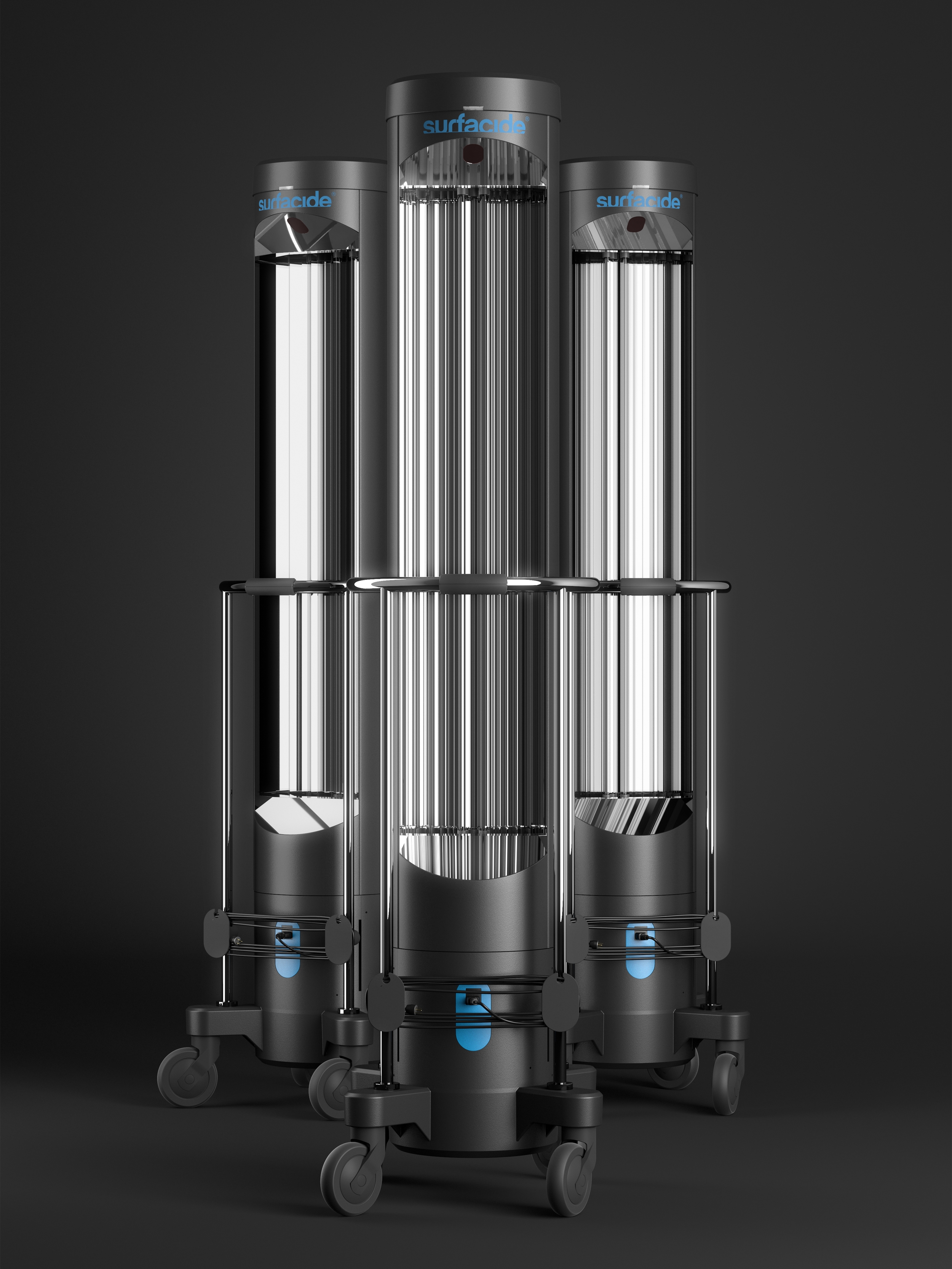

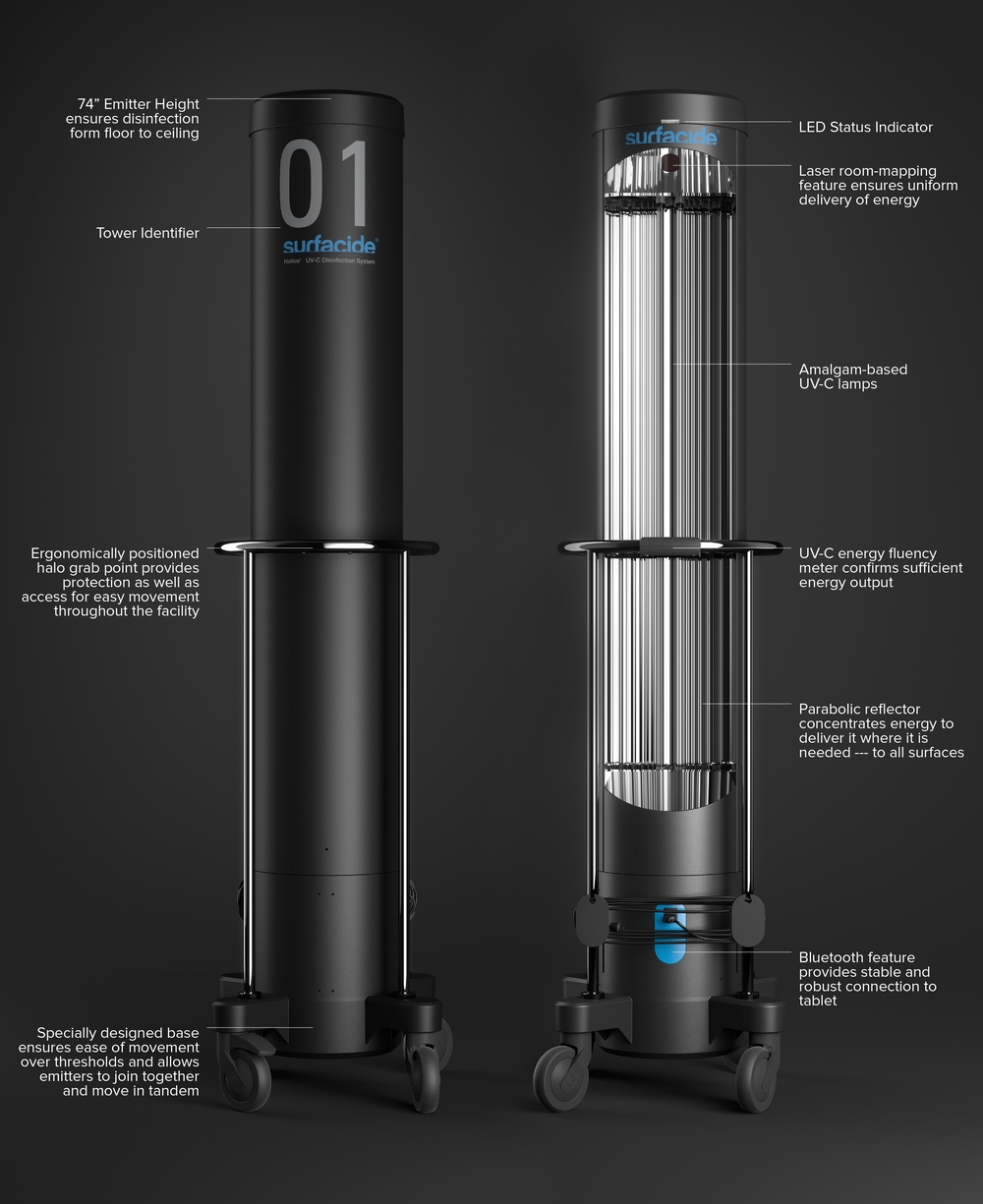
UI/UX
intuitive, safe, user interface
_
MINIMAL developed an intuitive platform to control the towers. The app allows the technician to calibrate cycles based on the specifics of the room and the bacteria responsible for infections.
